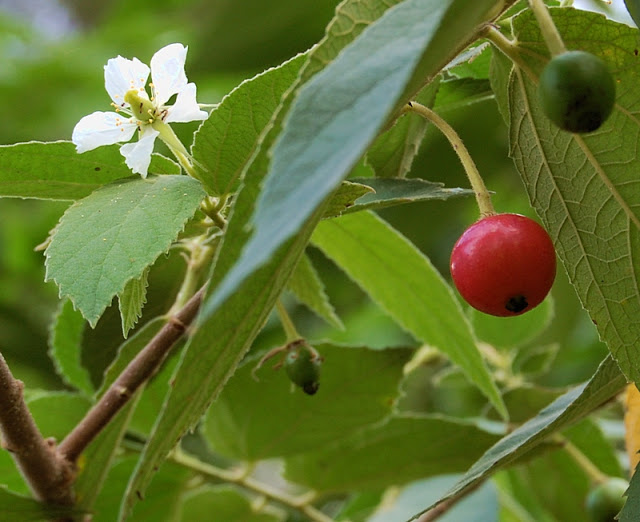

| Online: | |
| Visits: | |
| Stories: |

| Story Views | |
| Now: | |
| Last Hour: | |
| Last 24 Hours: | |
| Total: | |
Jamaica Cherry Fights Infections
A small roadside flowering tree introduced to South-East Asia from Latin America exhibits both antimicrobial and antifungal activity. Researchers at the University of the Philippines, Diliman analysed the leaves and stems of Muntingia calabura for the presence of biologically active compounds called phytochemicals. They also tested leaf and stem ethanol extracts from the tree against four different types of bacteria and a fungus.
Credit: Wibowo Djatmiko /Wikimedia Commons
They found that the leaves contained six phytochemicals known for their medicinal and physiological activities while the stems contained five. They also found that extracts from the leaves and stems of the plant had significant antifungal activity against Candida albicans, which causes yeast infections in the mouth, skin and vagina.
Previous studies have demonstrated anti-inflammatory, antimicrobial, analgesic and antioxidant properties in the tree’s leaves, as well as cytotoxicity against leukaemia cells in its roots. “The results of our study indicate that M. calabura is an alternative source of antibacterial agents against P. aeruginosa and S. aureus.
The results are promising but further research is needed. Phytochemical profiles of the same species vary from one region to another, most likely due to variations in growing conditions. “Different stressors may emphasize the production of one metabolite over another in response to the various needs of the plant,” the researchers noted, including variations in altitude, carbon dioxide levels, and the presence of insects and pathogens. This, they believe, could lead to slight variations in the types and amounts of phytochemicals found in M. calabura grown in the Philippines compared to other parts of the world.
Contacts and sources:
Raquel O. Rubio
Biological Research and Services Laboratory, Natural Sciences Research Institute
University of the Philippines Diliman
Source:



